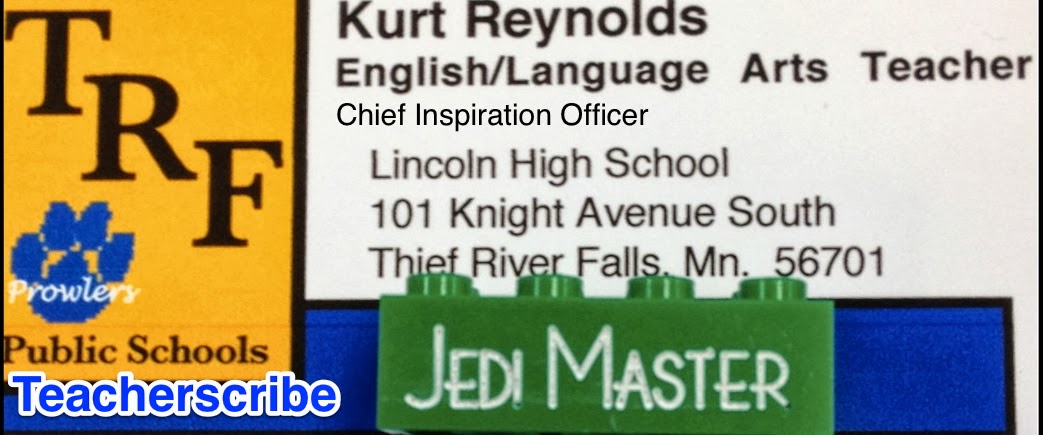Teacherscribe’s Teaching Tip #30
Luckily for us, there are a few ways to lift the curse of knowledge. Here are the first 3 (of seven) ways to make learning easier for your students.
- Emotion. Inject positive emotion into your lessons. I try to do this with my passion and enthusiasm. I know this works for every time my instructors (Ashley Beito and Darla Boen) inject enthusiasm into my work out classes, it energizes me. If they can fire me up to do more burpies, then I can use positive emotions to fire my students up to write another paragraph or read another chapter.
- Multi-Sensory Lessons. This one is pretty obvious. If you experience something in a variety of ways (as opposed to just via lecture), the variety of experiences engaged the brain in a variety of ways. Thus, the lessons stands a chance of being more effective. I try to do this with my Keynote slideshows. I always try to build in auditory and visual content. But I need to do more. How can I get students up and moving around too?
- Spacing. Cramming. This, according to the authors, is bad practice. But, like it or not, it’s what we all do. And it is an effective way to memorize something. I think of it this way (and I’m paraphrasing a quote I heard in my English methods class my junior year): “teaching is the art of acting live you’ve known all your life that which you just learned this morning.”
How do you use emotion, multi-sensory lessons, and spacing to make your lessons more engaging?
Teacherscribe’s Teaching Tip #31
Luckily for us, there are a few ways to lift the curse of knowledge. Here are the last 4 (of seven) ways to make learning easier for your students.
- Narratives. Tell a great story. This one is all me. Students might not recall much about MLA formatting or what sources they used in their MGRP, but they sure will recall my story about Barney or several stories about “Jack ass” Lance. Build narratives into our lessons.
- Analogies and examples. Another one that is right down my alley. Analogies and examples simply aid our abilities to latch on and retain a concept, especially abstract concepts. I’ll never forget one of my science teachers using an analogy of bowling balls on a trampoline to explain the concept of gravity in our solar system.
- Novelty. When you give students a rush from something original or unique, you are activating dopamine which gives us a rush. This is why every time I have a scavenger hunt, kids never walk orderly down the hall. They are in a mad rush to accomplish the challenge! But I need to do far more of this!
- Teach Facts. Or as Dr. Reynolds put it back at BSU, activate schema!!! I don’t know if I do this all that well, but I do know that one thing I do well – or one thing I have a knack for – is being able to connect anything back to the lives of our students. I don’t care if we are reading “Young Goodman Brown,” “The Yellow Wallpaper,” The Dip, or Outliers . . . But I can make it relatable and connect it to the every day lives of my students.
How do you use narratives, analogies/examples, novelty and facts to make your lessons more engaging?


No comments:
Post a Comment